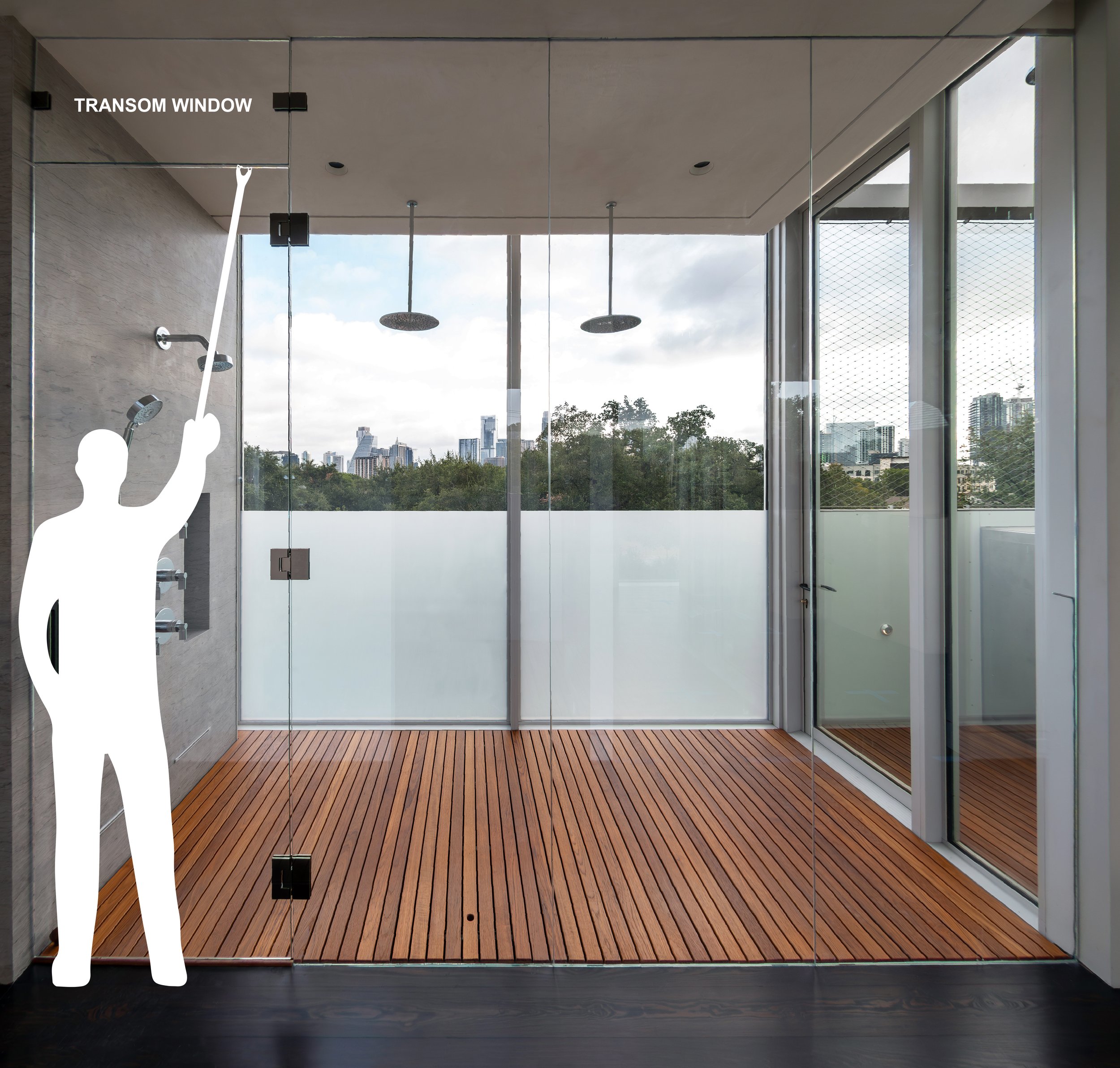



![Transom Stick Drawing [Converted]SM.jpg](https://images.squarespace-cdn.com/content/v1/5c89d4d14d8711f0c89e0e2c/1708025066087-LSMH3ML2X8II3ZI4K4GD/Transom+Stick+Drawing+%5BConverted%5DSM.jpg)
DESIGN BRIEF
The client wanted a tool to precisely operate the transom window in their steam shower. The transom window is ~8.5 feet from the floor, so the tool needed to be quite long, making precise control an interesting challenge.
OPERATION
The operation is intuitive. Simply push the rubber into the glass and the tool satisfyingly locks on with enough gripping force to hang by its own weight. Precisely rotate the window to the desired position and lightly pull away to remove the tool.
DETAILS
The tactile experience of holding the tool is improved with a hand-checkered handle to provide excellent grip for slippery hands. Teak with a tung oil finish was the best choice of wood to withstand the heat, moisture, and humidity.
DEVELOPMENT
I began by imagining what geometries might best accomplish the task of pushing a pivoting window in a controlled manner. I was interested to explore mechanisms as well but I didn’t want the user experience to be complicated by directionality or control inputs such as triggers or levers. Moreover, because this tool was to exist in proximity to a steam shower I needed to minimize complexities that could result in failure points.
I settled on adapting a simple single-piece rubber linkage that is typically used for broom storage. It only requires plastic friction fasteners and puts soft rubber in between the glass and the tool, which was an important consideration in my design criteria. Through iterative prototyping I determined how to modify the linkage’s geometry to work for a 3/8” flat surface, I explored balancing aesthetics and proportions with functionality and improved manufacturability, and I validated the functionality of the checkering in wet conditions.
All photography by Anthony Villanacci







![Transom Stick CAD [Converted].jpg](https://images.squarespace-cdn.com/content/v1/5c89d4d14d8711f0c89e0e2c/1708022415464-6XLJOMJXSXX7J6CKT994/Transom+Stick+CAD+%5BConverted%5D.jpg)



